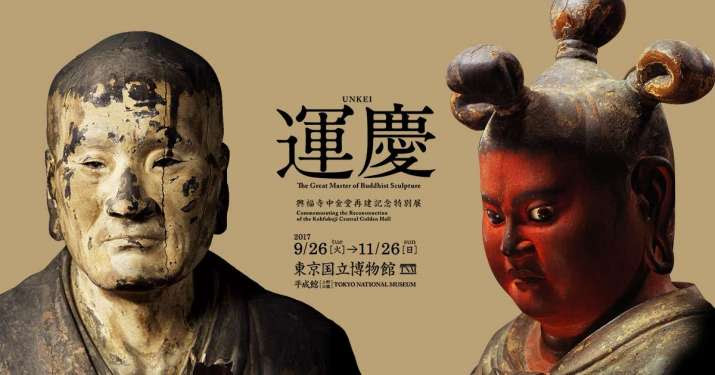Tokyo National Museum to Host Largest Exhibit to Date of Unkei, Genius of Buddhist Sculpture
By Shyamal Sinha

Unkei around 1150–1223) was a Japanese sculptor of the Kei school, which flourished in the Kamakura period. He specialized in statues of the Buddha and other important Buddhist figures.Unkei was a devout Buddhist, and records from 1183 (Heian period end) show that he transcribed two copies of the Lotus Sutra with the aid of two calligrapher monks and a woman sponsor named Akomaro.
Tokyo National Museum has announced that it will host a groundbreaking exhibition on master sculptor Unkei, titled “Unkei – The Great Master of Buddhist Sculpture,” from September–November. The event will commemorate the construction of the Central Golden Hall at Kohfuku-ji, known as one of the Seven Great Temples in Nara, Japan, which has close ties to Unkei.
Unkei, Japan’s most famous Buddhist sculptor, lived during the tumultuous transition from the Heian period (794–1185) to the Kamakura period (1185–1333), when political power in the country shifted from aristocratic rule in the west of Japan (Kyoto, Nara) to the shogunate in Kamakura in the east.
Born as the son of another famous sculptor (Kōkei), Unkei was part of the Kei School of Buddhist sculpture that emerged in the early Kamakura period and became the dominant sculptural school until the 14th century, which specialized in sculpting statues of the Buddha and other important Buddhist figures. Unkei was a devout Buddhist and introduced a new style of sculptural expression in his work. Although his early work shows the influence of his father’s style of sculpting and is fairly traditional, his later work is characterized by a realism that was unknown in Japan until that time. His real-to-life style influenced many sculptors that followed and, to date, he is seen as one of the most influential sculptors of the period by many art historians.

The exhibition at Tokyo National Museum honors his oeuvre and commemorates the construction of the Central Golden Hall at Kohfuku-ji. Unkei had ties to the temple as his workshop was requested to carve various images for its reconstruction after it was destroyed in 1181. Three statues, all national treasures, have survived until today and are still housed at the temple: a seated statue of Miroku Nyorai (Maitreya Tathagata), and standing statues of Mujaku (Asanga) and Seshin (Vasubandhu). Kohfuku-ji will lend all three of these works to the exhibition.
Unkei produced a lot of works during his lifetime. At present there are 31 sculptures that have been attributed to him. Twenty-two of these works, from collections and temples in Kyoto, Wakayama, Aichi, Shizuoka, and other regions, will be displayed at the exhibition. Many of these statues have never left their original homes, making the show the largest-ever exhibition of works by Unkei.

In addition to works by Unkei, the exhibition will include works by his father Kōkei and two of his sons, Tankei and Koben, to place his work in a broader context and show how his early sculptural style compares with that of his father, and how Unkei’s sculptural aesthetic was passed on to his sons, who continued his legacy.
The venue for the exhibition, the Heiseikan halls of Tokyo National Museum, will allow for a unique perspective of the statues. Visitors will be able to walk around the statues, and admire them from all angles—in the temples, this is not possible as the backs of the statues can usually not be seen.
The exhibition will also introduce some of the latest research related to the work of Unkei. For instance, it will show how X-ray and CT scan technology has allowed researchers to discover dedicatory objects placed inside some of Unkei’s sculptures.
The exhibition will run from 26 September–26 November 2017, at Tokyo National Museum, Heiseikan, in Ueno Park, Tokyo.





























